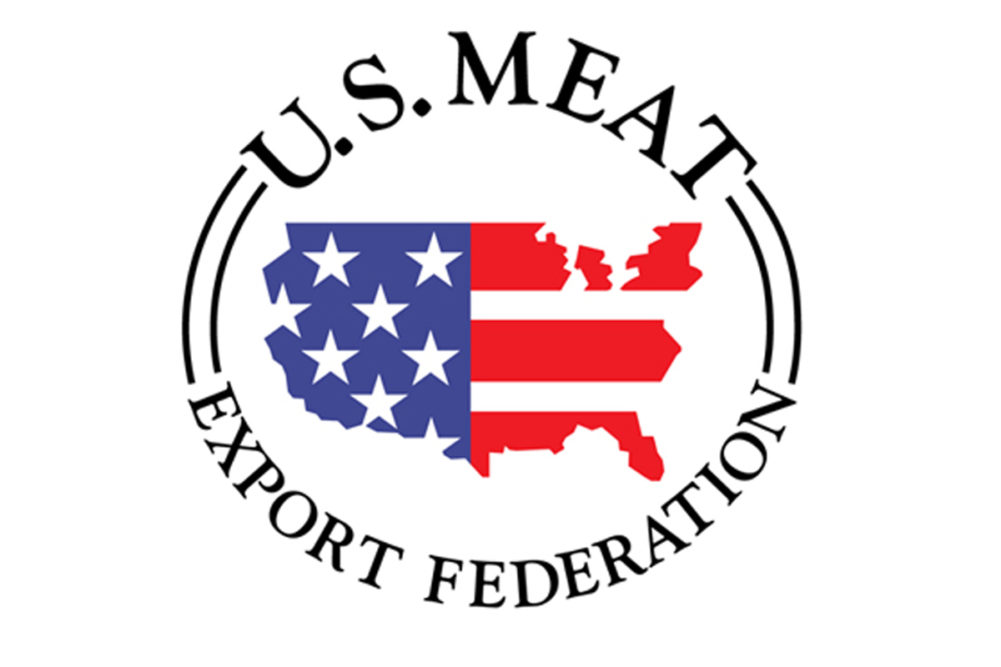WASHINGTON – The Chinese zodiac marked 2019 as the year of the pig, and there were plenty of reasons for red meat exporters to celebrate. US pork exports broke previous records for both volume (2.45 million mt set in 2017) and value ($6.65 billion set in 2014) based on data released by the US Dept. of Agriculture, the US Meat Export Federation (USMEF) reported.
Pork exports soared 34 percent year-over-year in December to 282,145 metric tons (mt), surpassing the previous high set in November 2019 by 9 percent, USMEF said. Export value was up 44 percent to $760 million, breaking the previous record (also from November 2019) by 7 percent. USMEF said these results pushed 2019 exports 10 percent above the previous year in volume at 2.67 million mt and 9 percent higher in value at $6.95 billion.
In December 2019, pork export value per head slaughtered was $66.70 which is nearly one-third higher compared to a year ago and the highest monthly average since 2014, USMEF said. Per-head value averaged $53.51 in 2019, up 4 percent year-over-year.
Exports accounted for a record-setting 32.1 percent of total pork production and 29.3 percent for muscle cuts only, up substantially from a year ago (26.1 percent and 23.6 percent, respectively) in December. In 2019, exports accounted for 26.9 percent of total pork production, up from 25.7 percent and the highest since 2012. For muscle cuts only, the ratio was 23.6 percent, up from 22.5 percent in 2018.
USMEF noted that pork demand in China/Hong Kong surged in December, while exports to Mexico rebounded. Following a record performance in November, China/Hong Kong's demand for US pork climbed even higher in December at 110,876 mt — more than quadruple the year-ago volume — while value was nearly six times higher at $274.9 million.
“Despite retaliatory duties and the other barriers US pork faces in China, exports to the China/Hong Kong region closed 2019 with tremendous momentum,” said Dan Halstrom, USMEF president and CEO. “We look forward to continued success in 2020, especially if US-China trade relations continue to trend in a positive direction. The coronavirus situation is certainly concerning and disruptive, but it hasn’t dampened our enthusiasm for the potential this market holds for US red meat.”
Pork exports to Mexico also closed 2019 on a high note, USMEF added. December volume reached 66,181 mt, up 10 percent from a year ago, and export value surged 46 percent to $137.6 million, the highest in two years.
After posting record-high percentages in 2018, beef exports declined 1 percent in volume (111,315 mt) and 3 percent in value ($682 million), USMEF reported. For 2019, exports totaled 1.32 million mt, down 2.5 percent from the previous year’s record volume. Beef export value declined by 3 percent to $8.1 billion after increasing by more than $1 billion in 2018.
Beef export value declined 9 percent to $321.21 in December. The average for 2019 declined 4 percent to $309.75, USMEF said.
Exports account for 14.3 percent of total beef production and 11.6 percent for muscle cuts only in December, down from 15.5 percent and 12.6 percent, respectively, a year ago. In 2019, beef exports accounted for 14.1 percent of total beef production and 11.4 percent for muscle cuts, down from the previous year’s record-high percentages (14.6 percent and 12.1 percent, respectively).
However, South Korea and Taiwan provided a highlight to the year as beef exports to both countries set new records, and beef variety meats posted a strong performance, USMEF said.
South Korea finished a close second to Japan as the leading value market for US beef setting a record $1.84 billion, up 5 percent from a year ago, USMEF reported. South Korea also was the second largest volume market for US beef at 255,758 mt up 7 percent, also a new record.
Beef exports to Taiwan were record-large for the fourth consecutive year in 2019 driven by success at foodservice and retail, USMEF said. Beef exports to Taiwan climbed 6 percent from a year ago in volume (63,538 mt) and 3 percent in value ($567.1 million). USMEF noted that the US dominates Taiwan’s chilled beef market, capturing approximately 75 percent of its chilled imports which is the highest share of any Asian destination.
“US beef is achieving remarkable success in Korea’s traditional retail and foodservice sectors and is well-positioned to capitalize on growth in e-commerce, the institutional sector and other emerging sales channels,” Halstrom said. “As US beef moves steadily toward duty-free status in Korea, it becomes accessible and affordable for a wider range of customers whose appetite for US beef continues to grow. We are seeing many new menu concepts in this dynamic market and continued excitement about US beef.”
Finally, lamb exports made progress led by strong demand in Mexico, USMEF said. December exports of US lamb were 1,225 mt, up 9 percent from a year ago, while value jumped 24 percent to $2.36 million.
For 2019, lamb export volume increased 22 percent from a year ago to 15,732 mt. Value advanced 12.1 percent to $26.1 million. Export volume to Mexico was the second highest on record behind 2011 and export value was the highest since 2014, USMEF said. In addition to Mexico, strong growth markets included Trinidad and Tobago, Panama, Guatemala and the Philippines.


